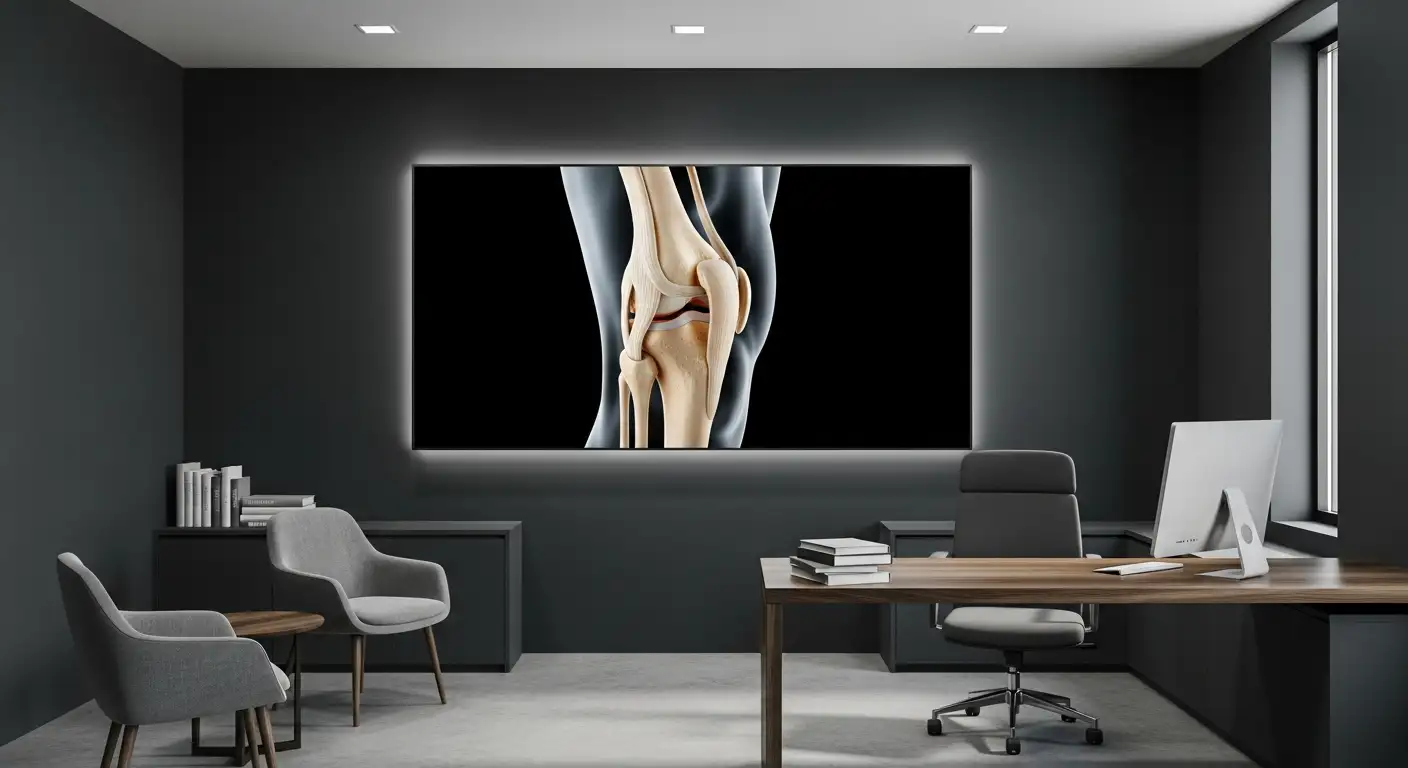Understanding Quad Stretches
Importance of Quad Stretches
Quad stretches are essential for maintaining the health and flexibility of the quadriceps muscles located at the front of the thigh. These muscles play a significant role in various daily activities, including walking, running, and jumping. They are responsible for straightening and bending the knee, stabilizing the knee during weight-bearing activities, and supporting balance [1].

Tightness in the quadriceps can occur due to various factors such as overuse, underuse, prolonged sitting, or injuries. Regular stretching helps alleviate this tightness, enhancing mobility and flexibility while also facilitating better performance in physical activities. Implementing a routine that includes the prone quad stretch can effectively target and relieve tension in these muscles.
Benefits of Quad Stretching
Engaging in quad stretching offers numerous advantages that can positively influence overall health and physical performance. Here are some key benefits:
BenefitDescriptionIncreased MobilityStretching helps improve range of motion in the knee and hip joints.Enhanced FlexibilityRegular quad stretches can lead to more flexible muscles, assisting in injury prevention.Reduced Musculoskeletal PainStretching can alleviate discomfort and tightness associated with daily activities.Improved PerformanceFlexibility contributes to better performance in sports and physical activities.Injury PreventionReducing muscle tension through stretching lowers the risk of developing injuries related to tight or overused muscles [2].
This simple yet effective practice can enhance overall functional movements, making it easier to engage in regular exercise or daily activities without discomfort. Proper muscle flexibility leads to a more active lifestyle, allowing individuals to maintain their health and wellness. To further address knee health, consider exploring other stretches like the gastrocnemius stretch or hamstring stretches for seniors.
Prone Quad Stretch Guide
The prone quad stretch is an effective technique for targeting the quadriceps muscles, particularly beneficial for those who may struggle with balance in traditional standing or seated quad stretches. This guide provides detailed instructions on how to perform the stretch, along with variations and modifications to suit different needs.
How to Perform the Prone Quad Stretch
To execute the prone quad stretch, follow these steps:
For more technical details, visit the guidelines from NISMAT.
StepAction1Lie face down2Bend knee, heel towards buttocks3(Optional) Use strap for assistance4Pull gently on strap for overpressure5Hold for 90 seconds6Repeat 3 times
Variations and Modifications
For individuals seeking to modify the prone quad stretch for comfort or efficacy, consider the following options:
Easier Variations
Harder Variations
For optimal results, warming up before stretching is advisable. A brief session of light cardio such as walking or biking can prepare the quads, making them more receptive to stretching Verywell Fit.
Utilizing these variations can enhance the effectiveness of the prone quad stretch, catering to individual flexibility levels and ensuring a comprehensive approach to knee health and flexibility. Balancing quadriceps and hamstring flexibility is crucial to prevent injuries Motion Specific Release.
Active Quad Stretch
Incorporating active techniques into stretching routines can yield significant benefits, especially when it comes to the quadriceps. The Prone Quad Contract-Relax (PNF) technique is an effective active stretch that enhances both flexibility and strength.
Prone Quad Contract-Relax (PNF) Technique
The Prone Quad Contract-Relax method transforms the passive prone quad stretch into an active exercise. This technique not only stretches the quadriceps but also strengthens them at their end range.
To perform this technique effectively, follow these steps:
PhaseDurationContraction10 secondsRelaxation20 secondsTotal Rounds2-3 rounds
Strengthening and Stretching Simultaneously
The Prone Quad Contract-Relax technique optimizes the stretching process by combining it with active strengthening. This dual approach is beneficial for muscle development, particularly for the quadriceps. Strength training ensures that the muscles support joint stability, which is crucial for knee health.
While engaging in this active stretching technique, individuals may also consider modifications to fit their comfort levels and abilities. For a gentler routine, they can revert to a relaxed prone quad stretch. Conversely, to make the exercise more challenging, they can lift the back leg, putting the hip into extension, which increases the stretch on the rectus femoris [3].
This combination of strengthening and flexibility not only enhances muscle performance but also contributes to better management of knee pain issues. By incorporating this active stretch into their routine, individuals can work towards achieving healthier knee joint function, while also preparing the muscles for various physical activities. For further exercises beneficial for knee health, visitors can explore our resource on knee exercises for seniors or quad tendonitis exercises.
Common Quad Issues
Causes of Tight Quadriceps
Tight quadriceps can arise from various factors. Engaging in activities such as running, cycling, or sitting for extended periods often leads to restricted movement in the quads. Common causes of tightness include:
Furthermore, conditions like patellofemoral stress syndrome (PFSS) and iliotibial band friction syndrome (ITBS) can also result in tight quadriceps. Individuals often experience tight, restricted, and overactive quads, leading to imbalances with stronger quadriceps and weaker hamstrings. This imbalance can inhibit hamstring activation, contributing to abnormal motion patterns across the lower body, heightening the risk of injuries [4].
Activity/ConditionImpact on QuadricepsRunningMay lead to overuse and tightnessCyclingCan cause prolonged contraction of quadsProlonged SittingCan contribute to stiffness and tightnessQuadricep StrainsAcute tightness and discomfortPFSS/ITBSChronic tightness and potential pain
Impact on Knee Health
Tight quadriceps can have significant implications for knee health. When the quadriceps are overly tight, they can affect knee mechanics and lead to several issues:
Addressing tight quadriceps through effective stretching, such as the prone quad stretch, can help alleviate these issues and promote better knee health. Additionally, integrating core strengthening and balance exercises can further enhance stability and reduce knee pain. For tailored exercises that target knee health, consider exploring knee exercises for seniors and related stretches like the biceps femoris stretch.
Quad Stretch Modifications
Easier and Harder Variations
The prone quad stretch can be easily adjusted to cater to different flexibility levels. For individuals who find the stretch challenging, the following modifications can help:
Here is a summary of the modifications:
VariationDescriptionEasierUse a resistance band to assist in the stretch.HarderPerform without support to engage core; add hip extension or lift back leg.
Ensuring Correct Form and Technique
Proper form and technique during the prone quad stretch are crucial to avoid injury and maximize benefits. Here are some key pointers:
By understanding these variations and focusing on proper technique, individuals can optimize their prone quad stretch experience. For further guidance on knee health and exercises, refer to the articles on knee exercises for seniors and quad tendonitis exercises.
Balancing Quadriceps and Hamstrings
Achieving a proper balance between the quadriceps and hamstrings is essential for maintaining overall leg health and preventing injuries. Muscle balance not only contributes to optimal performance in physical activities but also plays a crucial role in normal functional movements.
Importance of Muscle Balance
Muscle balance refers to the proportionate strength and flexibility between opposing muscle groups. Ideally, the strength ratio of hamstrings to quadriceps should be approximately 75%. This balance is critical as an imbalance can lead to various issues, such as increased susceptibility to injuries. Individuals commonly experience tight and overactive quadriceps paired with weak hamstrings. This imbalance can inhibit proper hamstring activation, resulting in abnormal movement patterns and greater injury risk, particularly in athletes [4].
Muscle GroupRecommended Strength RatioHamstrings75% of Quadriceps
Maintaining the harmony between these muscle groups is fundamental for any athlete or individual engaged in physical activity. A lack of equilibrium may lead to knee injuries, hamstring strains, and other lower extremity injuries, with an increased incidence of injury by over four times due to muscle imbalances in the quadriceps and hamstrings [4].
Preventing Imbalances and Injuries
To prevent muscle imbalances, individuals should focus on a combination of strength training, flexibility exercises, and proper myofascial release techniques. Incorporating daily stretches such as the biceps femoris stretch and gastrocnemius stretch can enhance flexibility and help restore balance between the muscle groups. Strengthening exercises like the step down exercise can target the hamstrings while simultaneously engaging the glutes.
In cases where mobility and strengthening exercises may not sufficiently correct imbalances, myofascial treatment can be beneficial. This approach focuses on releasing tension in both the quadriceps and hamstrings, facilitating optimal muscle function [4].
Tight hamstrings can lead to limited knee extension and increased stress on various structures of the lower leg, heightening the risk of conditions such as ACL injuries, Achilles tendinosis, and plantar fasciitis [4]. By prioritizing both stretch and strength for these muscle groups, individuals can improve overall functional movement, enhance athletic capabilities, and significantly reduce the likelihood of injury.
Regular assessment and adaptation of stretching and strengthening routines, while paying attention to individual needs, are key components in balancing the quadriceps and hamstrings effectively. For additional support when addressing knee health, consider exploring knee exercises for seniors and related resources.
References
[2]:
[3]:
[4]:





